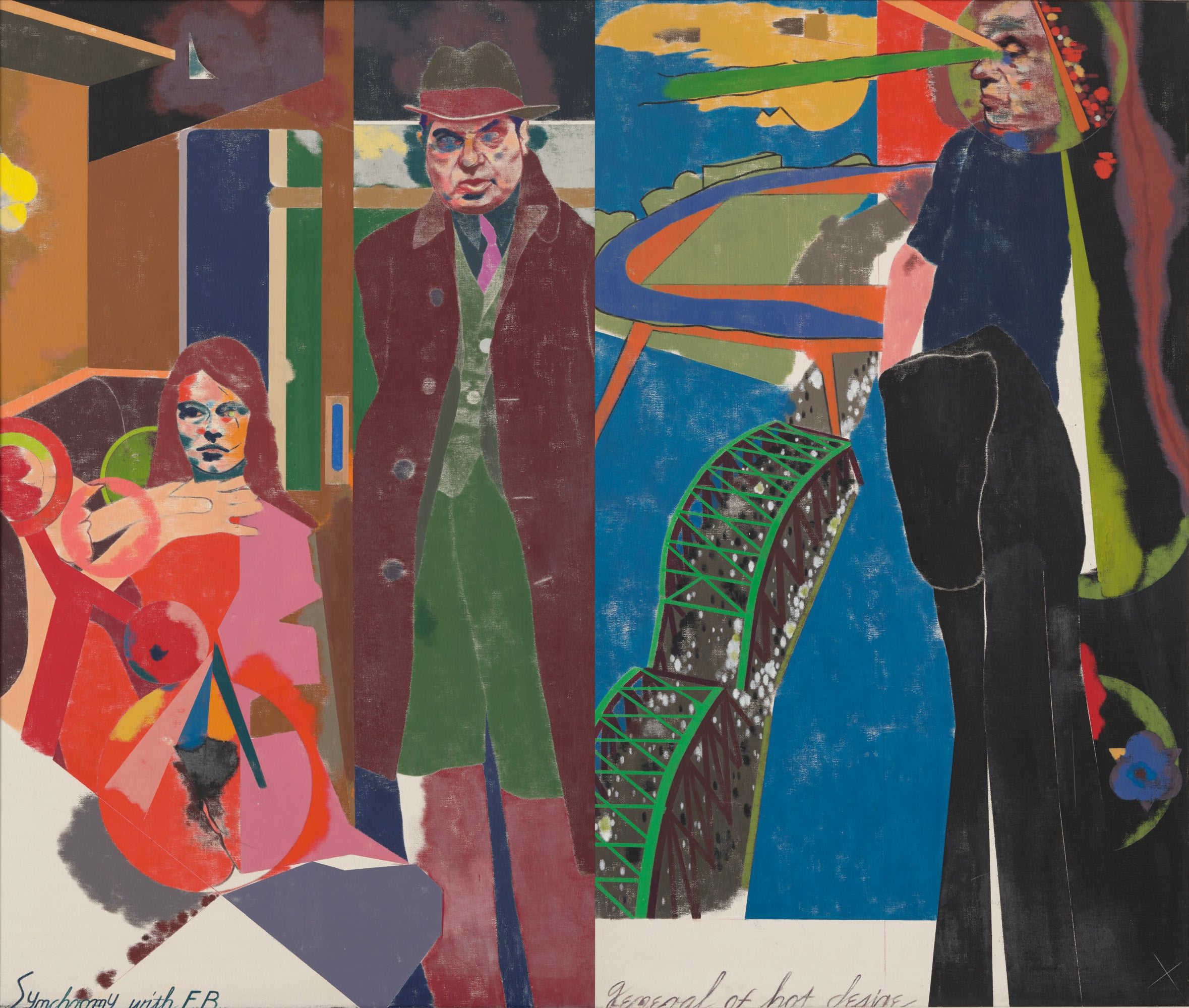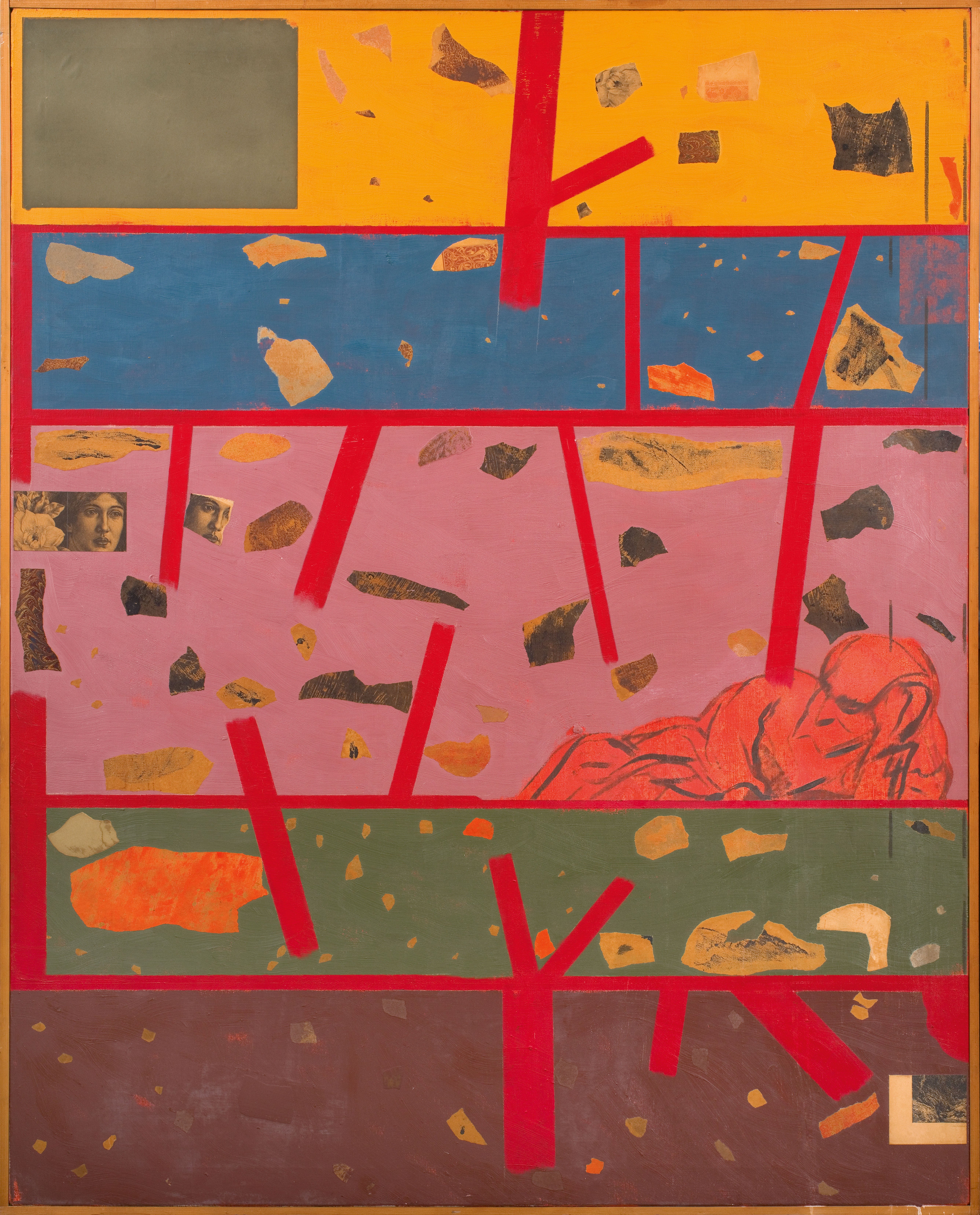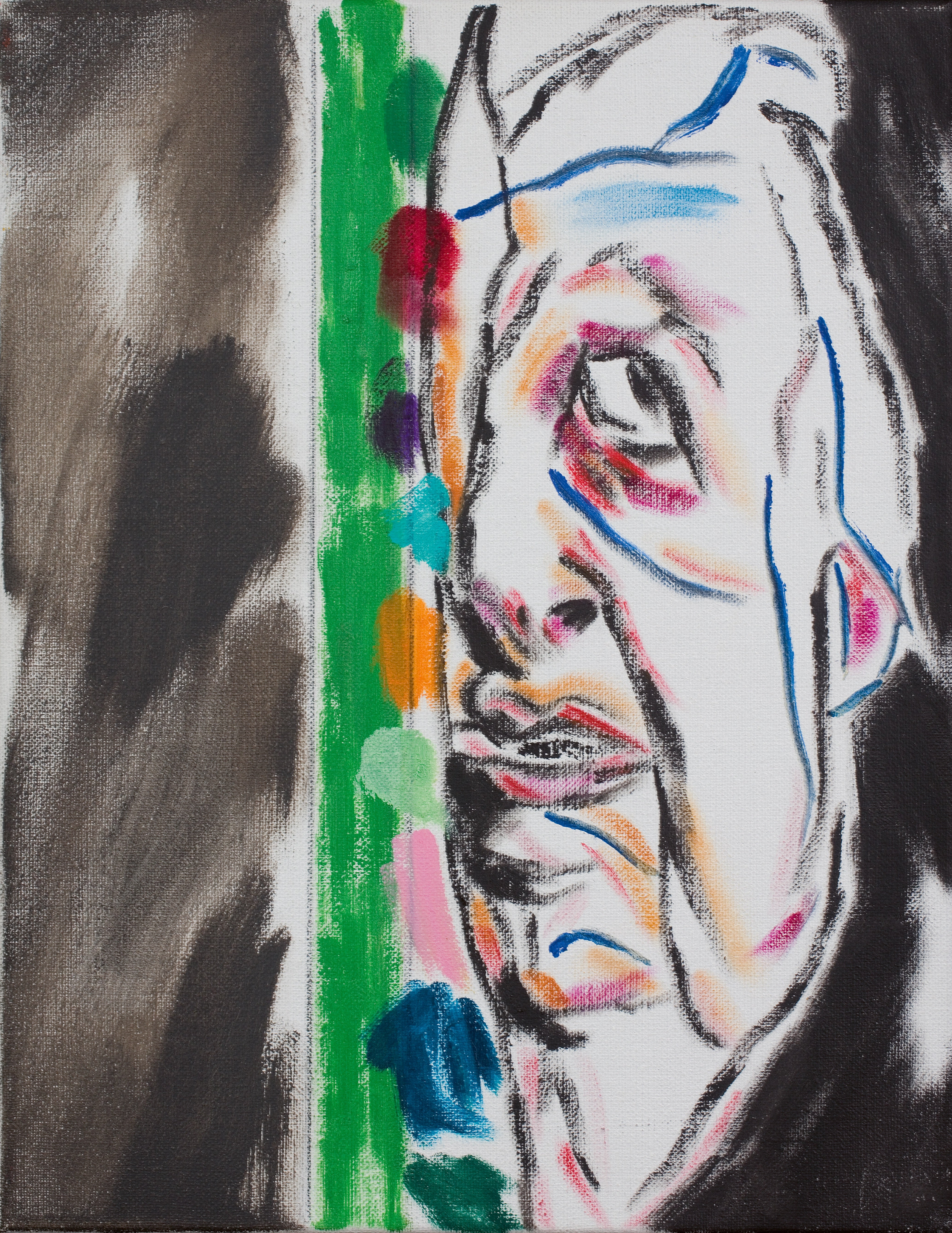RB Kitaj: a brilliant, prickly outsider who stuck to his artistic guns no matter what
The London-based American painter’s reputation has been clouded by an extraordinary 1990s media spat that he believed caused the death of his wife. But Kitaj led the way for greats like Lucian Freud and Hockney, writes Mark Hudson – why isn’t he better known?


When it comes to art, Britain is one of the most open countries in the world. Isn’t it? We’ve been welcoming in “foreign masters” since the Middle Ages, from Holbein to Canaletto and Whistler. The 20th century saw a massive influx of creative immigrants, not least the Windrush generation, who, after facing much prejudice, are now acknowledged as having made a huge contribution to British art.
Yet, a fascinating exhibition at London’s Piano Nobile gallery highlights what can happen to the brilliant incomer who makes an undeniably important contribution to British culture, but is seen as not quite playing the game, as being too clever, and too prickly, by half.
The London-based American painter RB “Ron” Kitaj helped shaped two key British art movements, Pop Art and the School of London, but has been oddly sidelined in accounts of both. Indeed, an extraordinary, infamous media spat in the 1990s came close to wiping out his reputation altogether. It is only now, 15 years after his death, that this important figure is emerging back into the limelight.
A former merchant seaman, born in Chagrin Falls, Ohio, in 1932, Kitaj studied art in Vienna and New York, and served in the US Army, before winning a place at London’s prestigious Royal College of Art in 1959. There he was part of a famously brilliant generation – including David Hockney, Allen Jones, Derek Boshier and Pauline Boty – who were to form the vanguard of British Pop Art, on whom Kitaj had a decisive influence.
Where Hockney and co had mostly come straight from life-drawing classes in provincial art schools, Kitaj, 15 years their senior, brought a much wider experience of life, and a breadth of artistic reference they could only gasp at. “Everyone else was painting Marilyn Monroe, he was painting the death of Rosa Luxemburg (the German Communist revolutionary),” Sir Frank Bowling, also at the RCA, recalled recently.
Indeed, it was Kitaj who gave Hockney permission to become “David Hockney” by encouraging him to paint his life as a young gay man in London, rather than trying to imitate American Abstract Expressionism – for which he had little feel. He thereby enabled the most glittering art career of modern times.
The exhibition The Human Clay, which Kitaj curated at Oxford’s Museum of Modern Art in 1976 launched the term The School of London to define a group of idiosyncratic mega-talents – including Francis Bacon, Lucian Freud and Frank Auerbach – who had never previously been thought of as a coherent movement. Yet, while the tag has gone into the language as shorthand for a distinctively British earthy realism – and the wild lifestyle that went with it – Kitaj’s role in defining it, and his conception of himself as a key member of the group, have largely been forgotten.

Kitaj perhaps was too American, too tetchy, too bookish, too Jewish to fit with a phenomenon associated with posh Englishness. Both Freud and Auerbach were, of course, Jewish immigrants, but that was never part of their art. In the wake of Kitaj’s first wife Elsi’s death by suicide in 1969, his own work became increasingly preoccupied with his Jewish heritage and Judaic philosophical traditions. Referring to Cezanne’s famous aphorism that he wanted to “redo” the great 17th-century French painter Nicolas Poussin “in the light of nature”, Kitaj wrote that he’d “like to try, not only to do Cezanne and Degas again after Surrealism, but after Auschwitz, the Gulag”.
This statement was picked up on by the critic Andrew Graham-Dixon in a review of Kitaj’s 1994 Tate retrospective as evidence of delusions of intellectual grandeur. Writing in this paper, Graham-Dixon launched an extraordinary attack, not only on Kitaj’s perceived pretensions to profundity, but on his basic competence as a painter. Several other leading critics pitched in with equally hostile reviews, with Kitaj’s insistence on providing lengthy explanations beside his paintings – a move that would barely be noticed today – proving a particular cause for complaint.
Kitaj accused the critics of effectively murdering his wife: Sandra simply hadn’t been able to withstand the shock of those reviews
What should have been the crowning moment of Kitaj’s career became what he referred to as “the Tate War”. When his second wife Sandra died of disseminated encephalomyelitis – an acute brain complication – two weeks after the show’s opening, Kitaj accused the critics of effectively murdering her: Sandra simply hadn’t been able to withstand the shock of those reviews. Leaving aside the plausibility of this claim, and there has been much speculation on the subject, the damage to Kitaj’s reputation had been done. The Tate War became his equivalent of Van Gogh’s ear: the thing everybody knows about him.
Kitaj died in 2007 in Los Angeles where he moved in 1997, of suicide by suffocation. Critics’ words can, of course, be taken with a large pinch of salt, but the idea that Kitaj’s art is visually over-complex and stuffed with pointlessly obscure references, and that he himself was extremely difficult, has never quite gone away. Until now.

Piano Nobile’s Kitaj mini-retrospective has garnered very positive reviews, including four stars in The Guardian – remarkable for a show in a relatively small commercial gallery. What is refreshing when walking into the show isn’t just the idiosyncratic interplay of colour, the skill of Kitaj’s draughtsmanship or even his way of splicing together diverse imagery in a form of painted collage, but the patent intelligence of everything we see. So Kitaj wasn’t embarrassed about hitting us with references that some might consider bizarrely recondite – like the five eccentrically painted Italian anarchists in his painting The Junta. Good for him. So he couldn’t be bothered to doff his hat to the British cultural establishment. Even better for him. In the current dumbed-down cultural climate we could do with a few more Ron Kitajs: uncompromising, self-educated polymaths who “come over here” – as the parlance has it – and are prepared to hit us with truths that go beyond the received and expected. Brilliant, prickly outsiders who stick to their creative guns no matter what? Bring them on.
RB Kitaj is at Piano Nobile until 26 January, 2024
Join our commenting forum
Join thought-provoking conversations, follow other Independent readers and see their replies
Comments
Bookmark popover
Removed from bookmarks